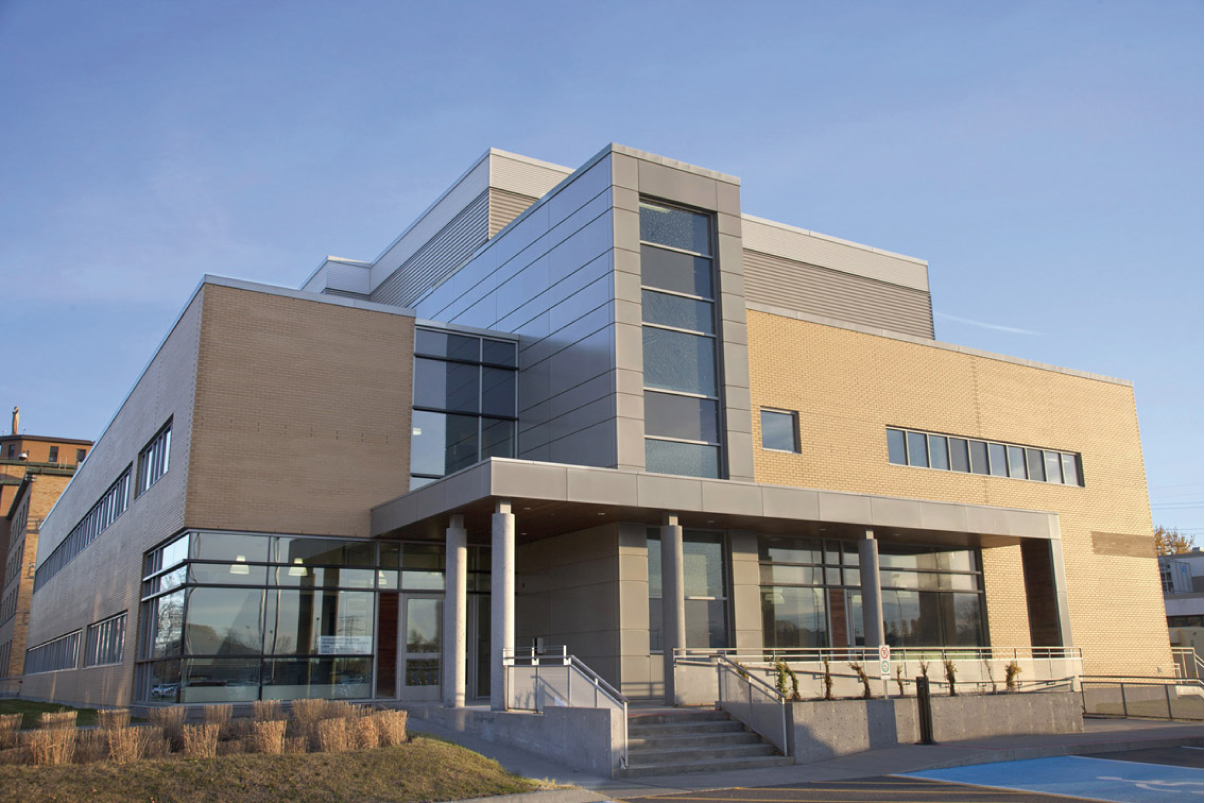Mission
The LOEX has undertaken the mission of developing knowledge in tissue engineering and regenerative medicine, which it carries out by supporting training and cooperation between researchers and graduate students. Rigorous fundamental research and close ties with clinicians are essential elements in improving the quality of knowledge transfer between laboratory and clinical settings.
Facilities
The research activities of the LOEX are carried out at two different sites. Saint-Sacrement Hospital holds within its walls the teams dedicated to ophthalmology, visual health and corneal tissue engineering, which occupy laboratories totalling 1800 square metres (19 500 square feet) in area. The other research teams work from the Multidisciplinary Centre for the Development of Tissue Engineering (Centre multidisciplinaire de développement du génie tissulaire - CMDGT), a 5000-square-metre, three-storey facility built in 2009 on the grounds of the Enfant-Jésus Hospital. In particular, the CMDGT houses ISO 7 clean rooms totalling 185 m2 in area. The clean rooms are used to produce cells and tissues for grafting or for clinical trials in a controlled environment, in which conditions are strictly maintained as close as possible to GMP standards.

Scientific Program
The LOEX is one of the largest regenerative medicine laboratories in the world to be found under a single roof. Its organisational structure at the operational level is pyramidal, from the Management to the technicians. The managers include the Director, Dr. Auger, and the Scientific Director, Dr. Germain. At the scientific level, its structure is more horizontal. Researchers are on an equal footing regarding the distribution of laboratory space and equipment; the sharing of both is mandatory.
Overall, the LOEX has aimed to increase its domestic and international competitiveness through targeted recruiting of promising candidates and formal collaborations with world-renowned research centres (MIT, Georgia Tech, Imperial College, CH Édouard Herriot Lyon, etc.). These collaborations are carried out following agreements established with the help and consent of the Research and Creation Vice-Rectorate and the International Office of Université Laval. The LOEX will maintain its current vision of high-level multidisciplinary research, which brings together scientific research goals of a more fundamental nature while promoting interactions with the clinical environment in order to better guide research projects towards translational objectives.
With the help of clinical researchers at the LOEX, some clinical and translational projects are already underway, involving skin substitutes and limbic eye stem cells for corneal epithelium substitutes. Clinical trials are expected in the near term for bladder substitutes and in the mid term for adipose tissue substitutes. Such plans are more in the long term for vascular, ligament, bone and nervous tissue substitutes.
A cGMP facility for personalized tissue engineering: Healing patients' wounds with tissues produced in the lab
Help us to build a GMP facility for personalized tissue engineering :
Fondation du CHU de Québec
(https://www.jedonneenligne.org/fondationchudequebec/LOEX/)
Patients who are severely burned over 80% of their total body surface area require autologous grafts to cover their wounds with their own cells. Patients with a visual deficit due to limbal stem cell deficiency need an autologous corneal epithelial graft to restore their sight. Other individuals suffer from damaged tissues (adipose tissue, bladder, sectioned nerve, etc.) that must be replaced in order to restore their health. The LOEX/CHU de Québec-Université Laval has developed methods to reconstruct tissues in the laboratory. However, the Health Canada regulatory agency requires that tissues grafted on patients be produced in specialized laboratories following the Good Manufacturing Practices (GMP) standard and practices. Therefore, in order to continue our innovative development of personalized tissue engineering and assess the breakthrough potential of tissues engineered by our internationally dominant technology, the self-assembly approach, our overall objective is to build specialized GMP laboratories that will allow us to advance our clinical research in order to concretize the translation of discoveries for the benefit of patients.
Presentation of the project: click here
